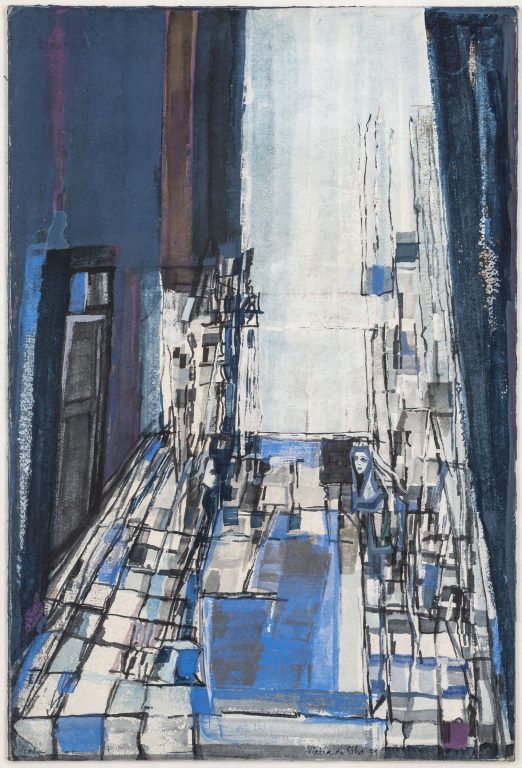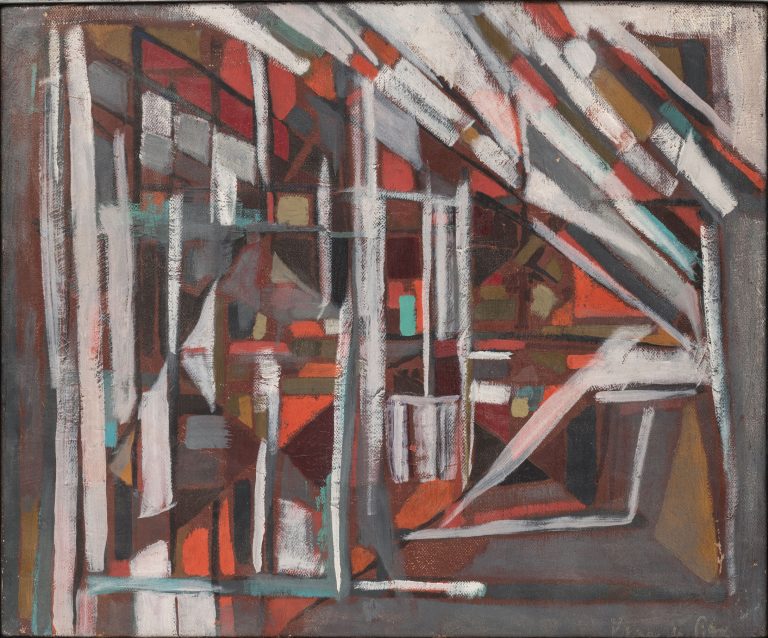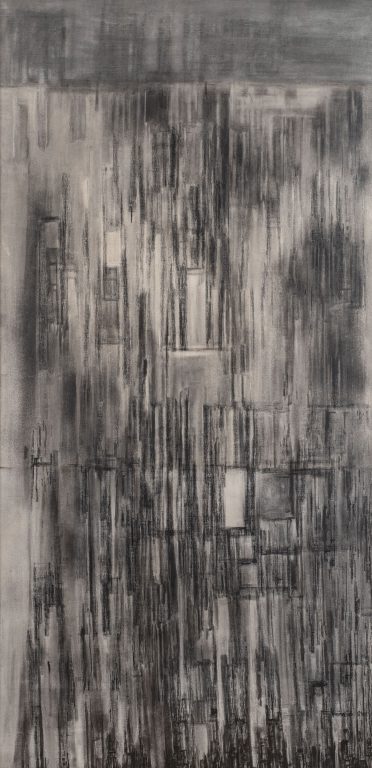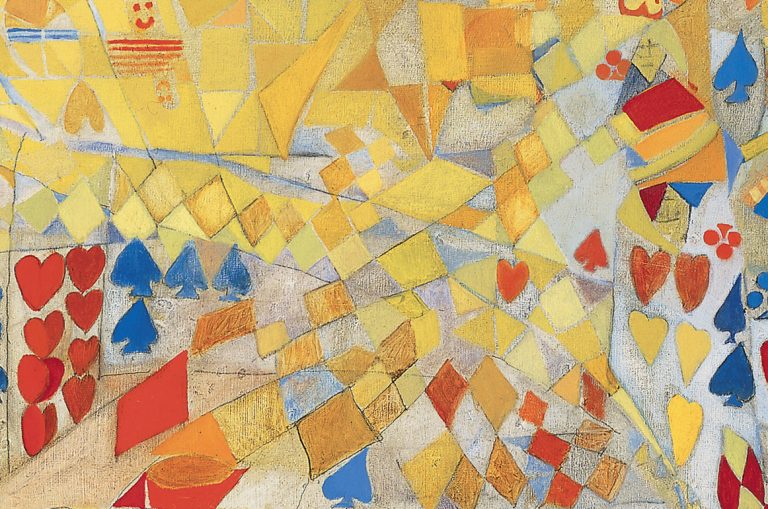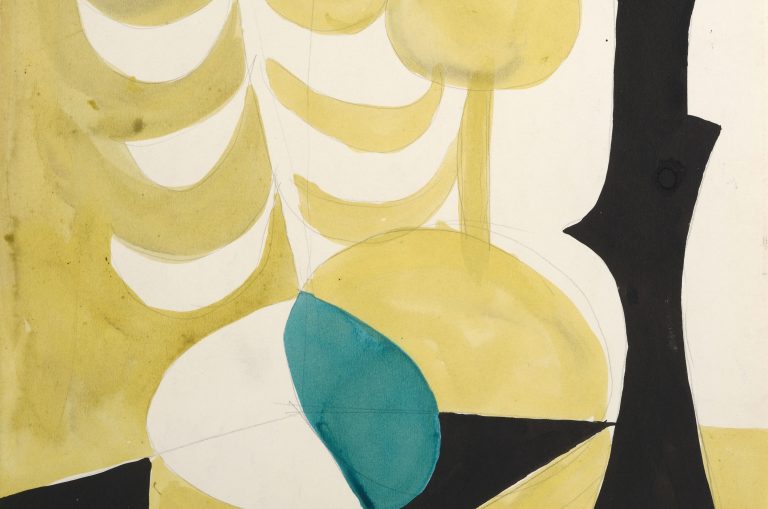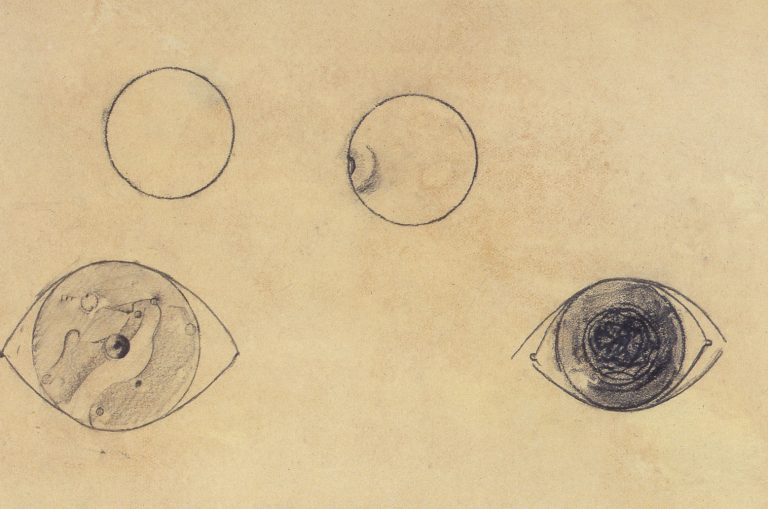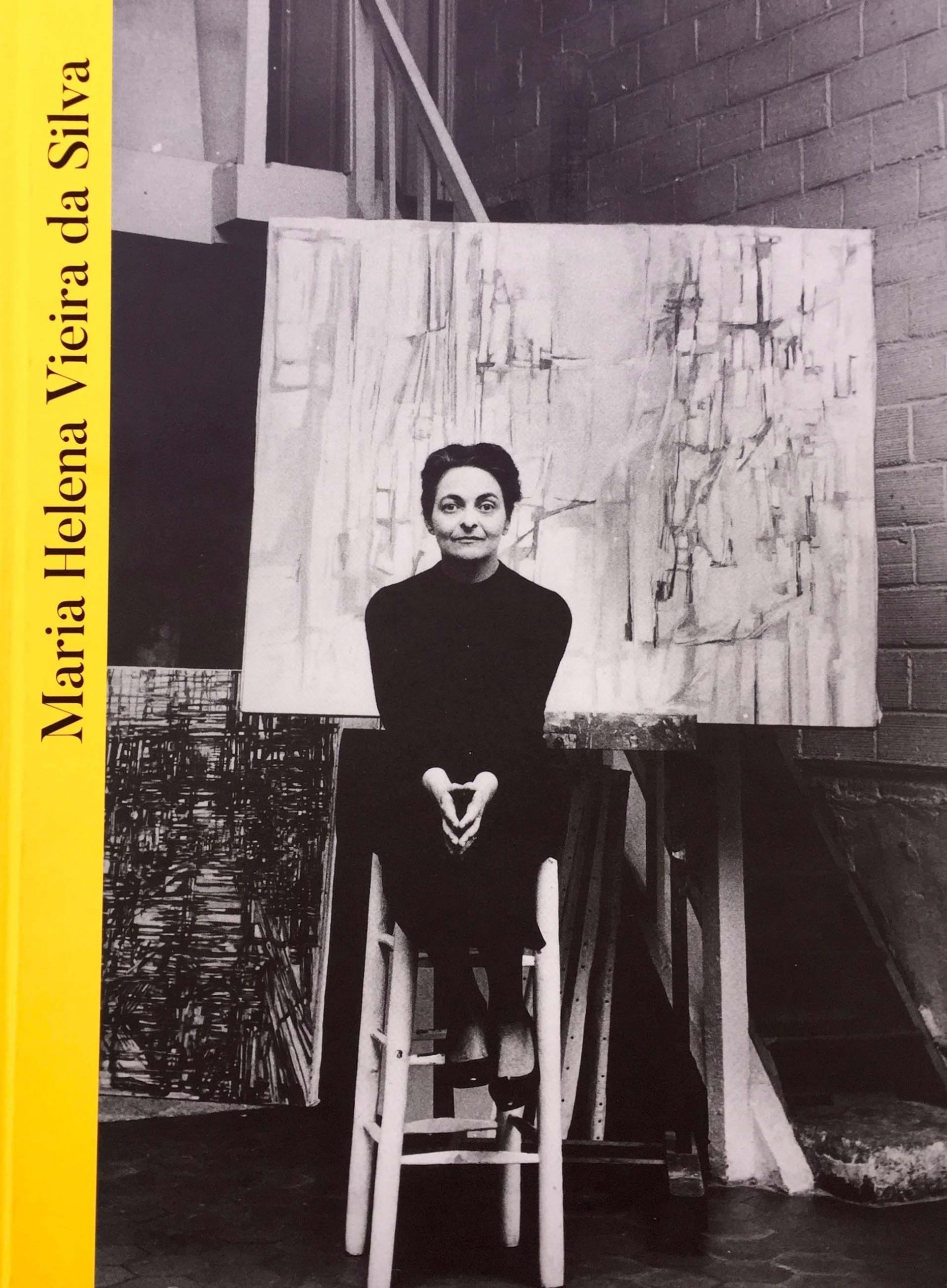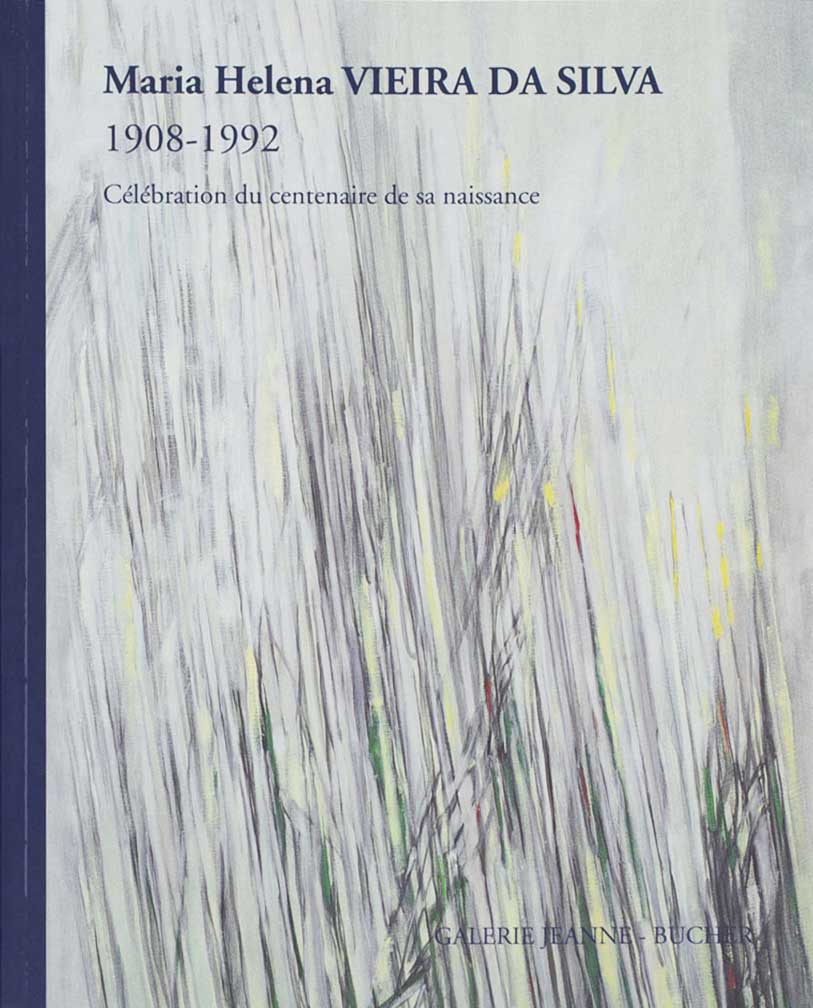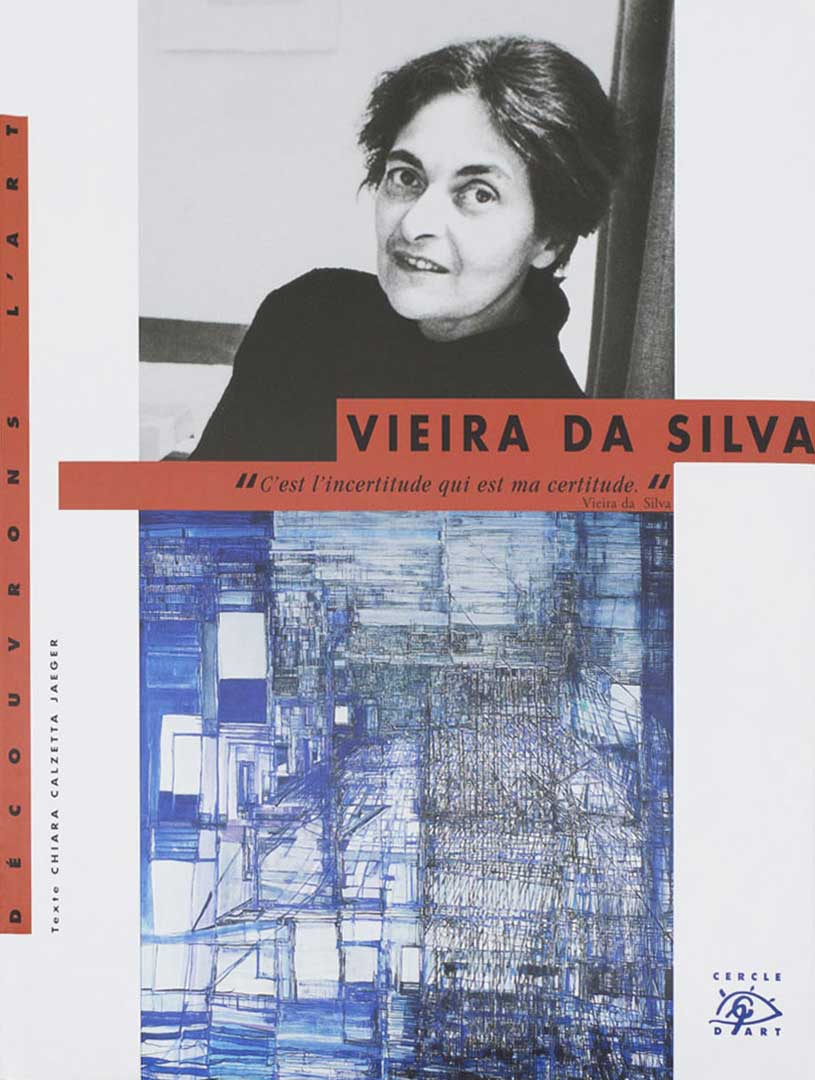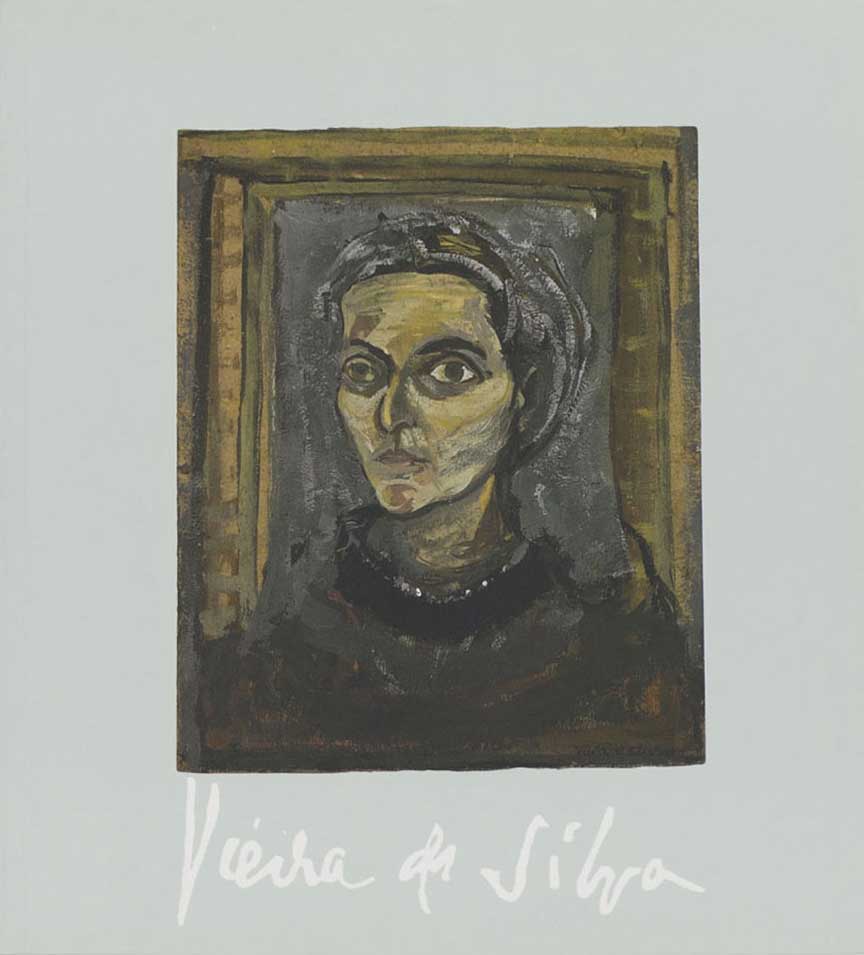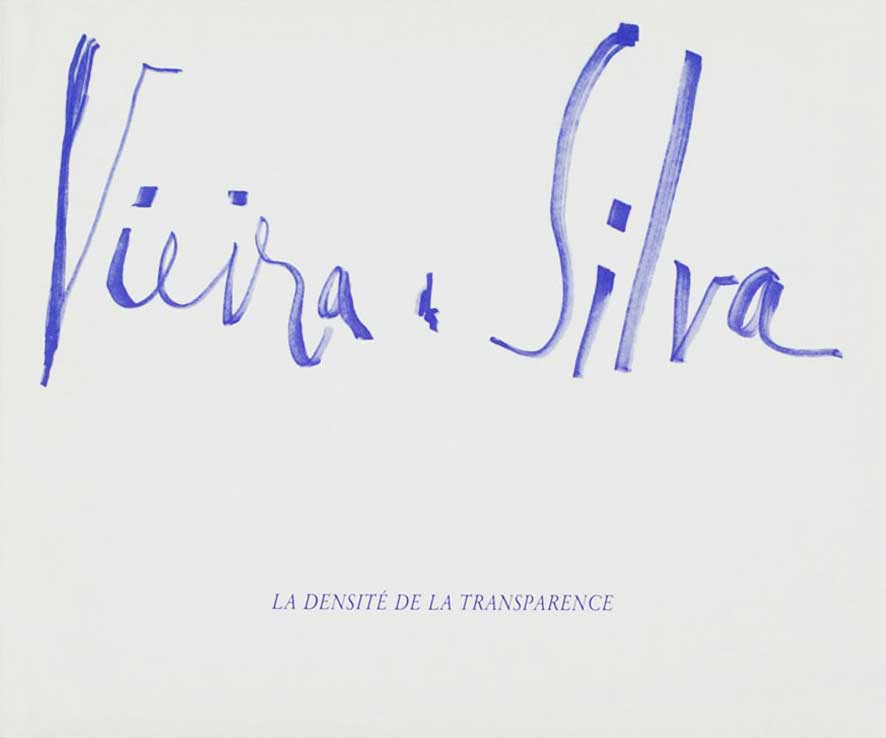Maria Helena Vieira da Silva was introduced to art at an early age by her grandfather, founder of the Lisbon newspaper O Século. After studying at the Lisbon School of Fine Arts, she left her native country for Paris in 1928, where she continued her training at the Académie de La Grande Chaumière, taking classes with Fernand Léger, Bourdelle and the Académie Ranson. It was during this period that she met her future husband, Hungarian painter Árpád Szenes. Introduced to the new artistic currents of Impressionism, Futurism and Cubism, as well as to sculpture, from 1929 onwards she devoted herself essentially to painting, and sought her own style through the eye and experimentation, claiming not to belong to any particular current. The spatial research of the Sienese School and Perspective enthralled her, as did the discovery of Cézanne and his Card Players in their spatial continuity, which gave her “the key to get behind the seemingly dead-end wall”. Vieira da Silva’s collaboration with Jeanne Bucher began in 1933, with the publication of Kô & Kô. At the time, Vieira da Silva was interested in unusual perspectives built around a vanishing point, in which space plays an essential role. She then goes on to build it up with color and diamond shapes, reminiscent of Portuguese azulejos, creating a structured network “where characters wander, climb, descend” in a spatial mesh. She was passionate about perspective, “managing to suggest an immense space in a small piece of canvas” by creating a space of her own. During the Second World War, Vieira da Silva and her husband moved to Portugal, then went into exile in Brazil, before returning to Paris in 1947. On her return, the French government initiated a policy of acquiring her works. Naturalized as a French citizen in 1956, Vieira da Silva received numerous awards, both Portuguese and French, including the Grand Prix National des Arts in 1966. She was made a Chevalier de la Légion d’honneur in 1979 and was awarded Portugal’s Grand Cross of Freedom in the 1980s.
The infinite perspectives of her compositions are always read as the manifestation of an essential exploration of space, its nooks and crannies and its connections, whether intimate like bedrooms or distant like stretched corridors, as she immigrated among so many others to post-war Paris. From a convergence of lines woven into networks, she invites the eye to identify emerging images that draw their source from her memories and intuitive sense of pattern and rhythm. The psychological space created by this fragmented representation of reality captures the way the mind retains and reshapes memories: it refers not only to her life in Paris, but to the sensory experiences of her childhood in Lisbon, famous for its diamond-paved streets, the Portuguese calçada. Although she maintains a sense of spatial depth and perspective through an underlying structure and order, Vieira da Silva delights in blurring the boundary between representation and abstraction, so that the evocative surfaces of rooms, houses, famous railway stations, crossing bridges or aerial urban views never fully describe a single place or panorama, but a tangle of places visited. Vieira da Silva certainly paints his astonishment at being alive, moving, persevering, opening up to light and exchange with everything around him. In the growth of the organic fabrics of her paintings, where lines cross and recross, she is always discovering new outlets for light, that void/fullness, that destination of unknown presence that she has been exploring since the beginning of her work and, more particularly, in her works from the 70s to 90s, where an upward trajectory becomes more evident, It’s as if our lives were like a crossroads, of which we ourselves were the architect, engineer and designer, evolving within a multi-reality where the multiplication of points of view shakes the most entrenched certainties in a labyrinthine journey where the artist is the sole holder of the Ariadne’s thread. Her uncertainty becomes a certainty, guided by innovation and the demands of a profound metaphysical and spiritual quest. The canvases of recent years become free of structure, the better to probe the light, the luminous clarity that lies beyond the mirror of life.
Vieira da Silva died in Paris in 1992, two years after the creation of the Árpád Szenes – Vieira da Silva Foundation in Lisbon and just before the inauguration of the museum housing her works and those of her husband. The artist’s work has been faithfully promoted and defended throughout her life, and continues to this day by the Galerie Jeanne Bucher Jaeger; from Jeanne Bucher, who made her known in her early days, to Jean-François Jaeger, who promoted her work from 1947 to 2003, and, since 2004, by its President Véronique Jaeger, who was also co-curator of the commemorative exhibitions marking the tenth and twentieth anniversaries of the Lisbon-based Foundation, and who has taken part in countless exhibitions in France and abroad since 2004. Exhibited all over the world, his works are now part of the collections of the world’s leading institutions and private foundations; in the United States, those of MoMA (first purchaser of his work) and the Guggenheim in New York, the Phillips Collection in Washington, the San Francisco Museum of Modern Art and the Art Institute in Chicago; in France at the Centre Pompidou-Mnam and the Musée d’Art Moderne de la Ville de Paris, the museums of Dijon, Marseille, Colmar, Nantes, Metz, Rouen, Lyon, Grenoble, the Stedelijk Museum in Amsterdam, the Tate Modern in London, the Gulbenkian in Lisbon, the Basel Museum in Switzerland… In 2019, Galerie Jeanne Bucher Jaeger and two fellow gallery owners are planning a historic touring exhibition between Paris, London and New York. In 2022-2023, as part of the France-Portugal Season, the Musée des Beaux-Arts in Dijon and the Musée Cantini in Marseille, in partnership with Galerie Jeanne Bucher Jaeger, organized a retrospective entitled Vieira da Silva, L’œil du Labyrinthe, bringing together more than 80 iconic works from prestigious institutions.
In 2023-24, the Musée Mohammed VI d’art moderne et contemporain in Rabat, in collaboration with the Árpád Szenes – Vieira da Silva Foundation in Lisbon, is organizing the first major exhibition in Morocco dedicated to the couple Maria Helena Vieira da Silva and Árpád Szenes, entitled Une histoire d’amour et de peinture. As part of the commemoration of the fiftieth anniversary of the Carnation Revolution in Portugal, Vieira da Silva is chosen by the Portuguese government as the official artistic figure symbolizing the notion of universalism and freedom. An exhibition entitled A nos a Liberdade (A nous la Liberté), featuring some thirty major paintings, opens on April 23 at the Sao Bento Palace of the Assembly of the Republic in Lisbon, and runs until the end of July 2024. Among the works on display are two by Vieira da Silva and Sophia de Mello Breyner Andresen entitled A Poesia esta na rua (Poetry is in the Street), celebrating the Carnation Revolution. Galerie Jeanne Bucher Jaeger is organizing a presentation of major works to coincide with Art Paris in early April 2024, and the Théâtre de la Ville de Paris is planning to display some 15 reproductions of Vieira da Silva’s key paintings in the entrance to the Théâtre for almost a month, to mark the commemoration of the Carnation Revolution, paying tribute to an artist who has always placed the values of freedom and the rule of law above all else.
downloads
Oil on canvas
23,6 × 36,2 in
Watercolor, tempera and China Ink on paper
23,2 × 15,3 in
Photograph by Jean-Louis Losi
Oil on canvas
23,6 × 28,7 in
Oil on canvas
15 × 18,1 in
Photograph by Jean-Louis Losi
Oil on canvas
45,7 × 53,9 in
Oil on canvas
44,9 × 57,5 in
Oil on canvas
11,8 × 13,8 in
Photograph by Jean-Louis Losi
Oil on kraft paper laid down on canvas
18,7 × 55,5 in
Oil and charcoal on prepared paper
76,7 × 38,1 in
Oil on canvas
23,6 × 36,2 in
Watercolor, tempera and China Ink on paper
23,2 × 15,3 in
Photograph by Jean-Louis Losi
Oil on canvas
23,6 × 28,7 in
Oil on canvas
15 × 18,1 in
Photograph by Jean-Louis Losi
Oil on canvas
45,7 × 53,9 in
Oil on canvas
44,9 × 57,5 in
Oil on canvas
11,8 × 13,8 in
Photograph by Jean-Louis Losi
Oil on kraft paper laid down on canvas
18,7 × 55,5 in
Oil and charcoal on prepared paper
76,7 × 38,1 in




